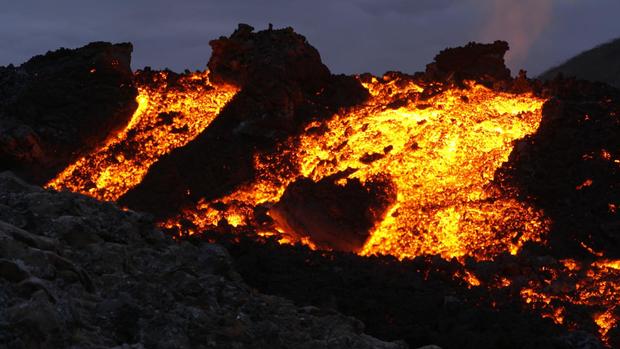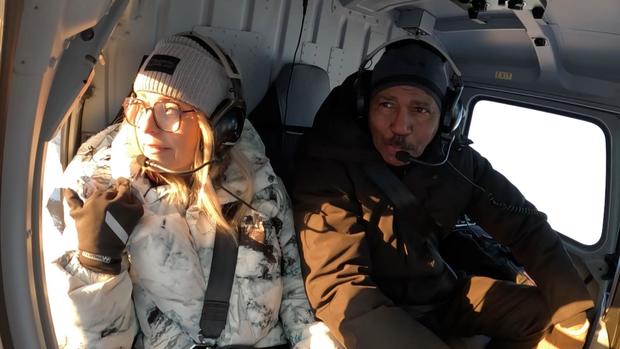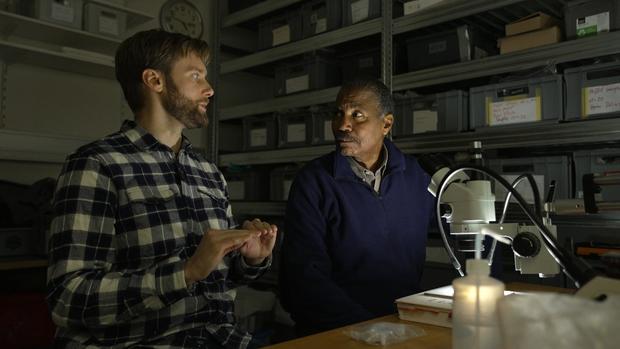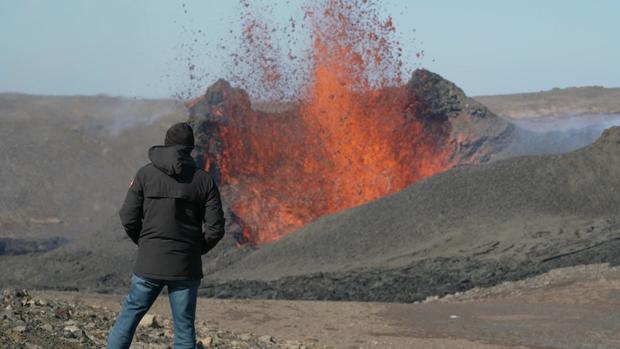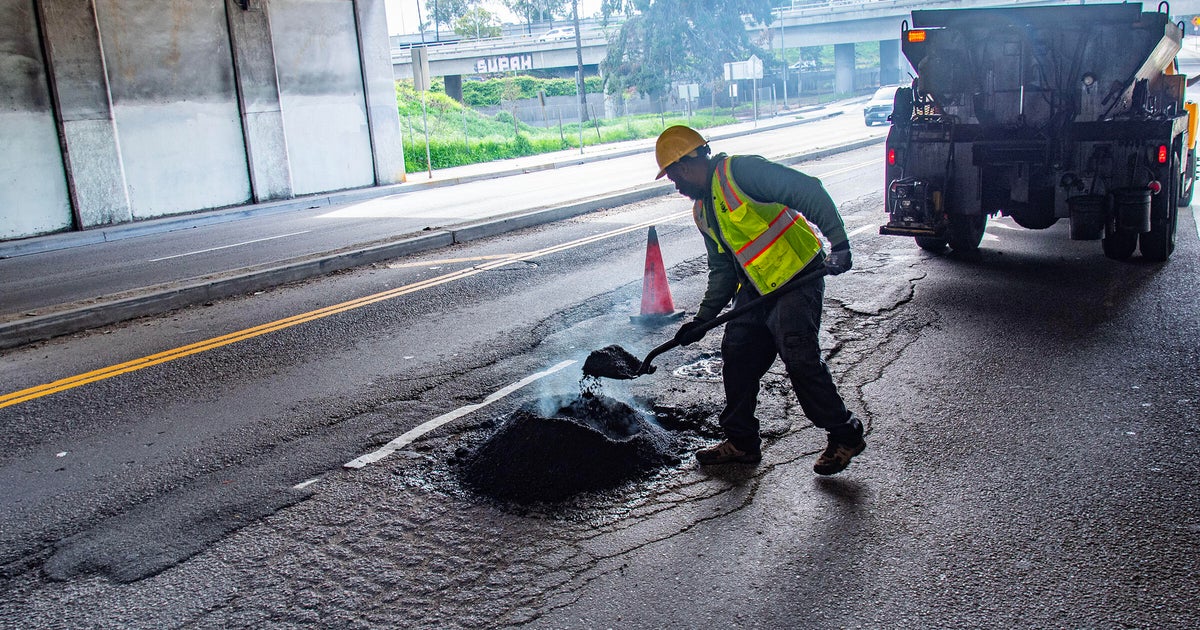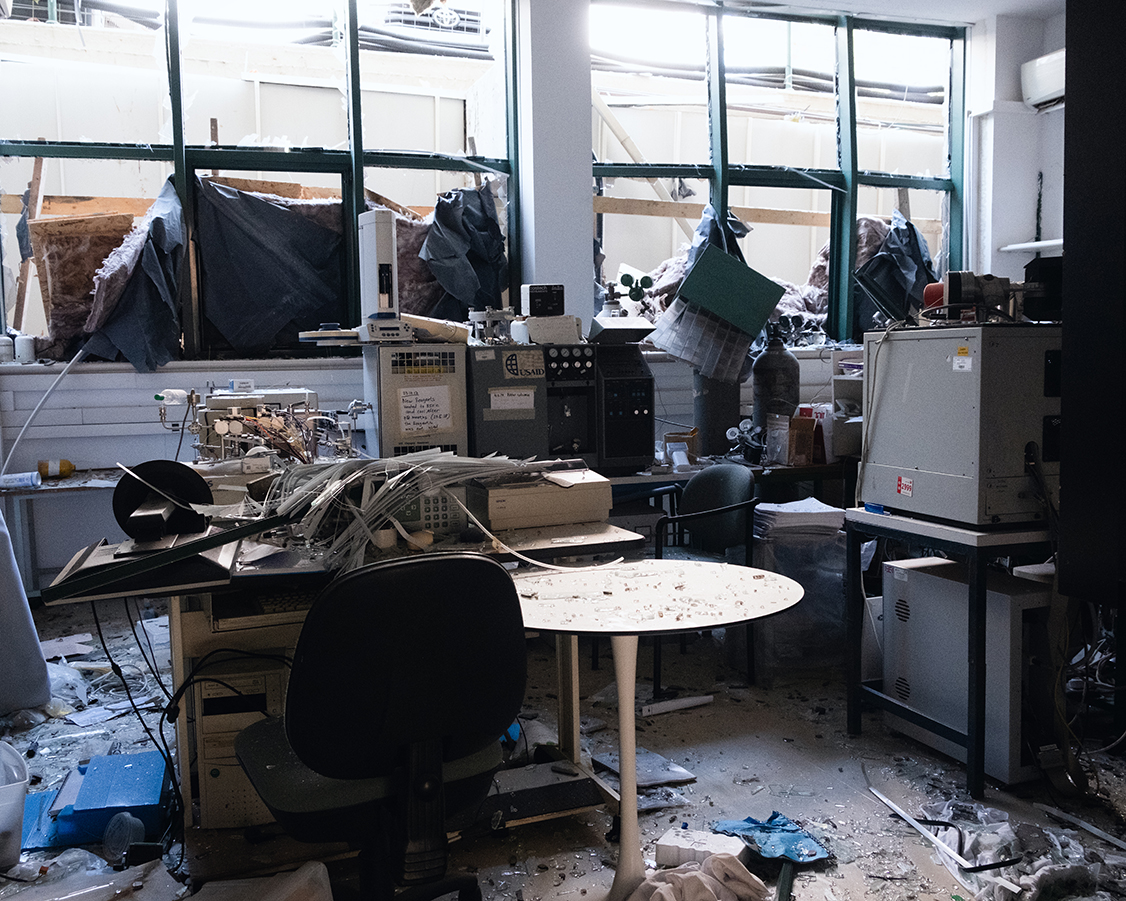Molten rock still scorching under lava field months after volcanic eruption in Iceland
Months before the Geldingadalir volcano erupted in 2021, Iceland's volcanologists knew it was coming. A subterranean serpent of magma was coiling through the depths looking for a way out. As the magma stirred, it triggered tens of thousands of earthquakes. When the volcano finally blew, scientists scrambled for the equipment to record it. Many predicted a new seismic era for the land of fire and ice and last summer the same volcano exploded again. As we first reported in April, scientists have revealed some startling discoveries from the two eruptions, inching us closer to the day when eruptions will be forecast as we forecast rain. We went back to Iceland to see how the work was progressing.
During the 2021 eruption, we saw chunks of molten rock the size of cars cartwheel into the air. Lava boiled up through nine vents as the earth unzipped. But it was number five – this one – that stole the show. We watched from a hilltop with seismologist Kristin Jonsdottir as waves of lava poured down the valley. In the end, scientists calculated there was enough lava to fill an Olympic-sized swimming pool every four seconds. We wanted to see what it looked like now, so we flew back to the same hill.
Bill Whitaker: Wow. This is remarkable.
Kristin Jonsdottir: Completely changed
Bill Whitaker: Completely changed
Bill Whitaker: How much lava is out here?
Kristin Jonsdottir: So the maximum thickness is about 100 meters and it is the thickest by the crater
Bill Whitaker: That's a little more than 300 feet deep
Kristin Jonsdottir: Yes
Bill Whitaker: That's incredible
Lava had filled up the valley like a bathtub. The hills where Icelanders came for a closer look were gone. So was its tongue-twisting icelandic name. Now, we had to learn a new one.
Kristin Jonsdottir: So the whole mass that you see behind here is called Fagradalsfjall.
Bill Whitaker: Fagradalsfjall
Kristin Jonsdottir: Very good, excellent
That means "Beautiful Valley Mountain" – a lot easier to pronounce. A new name for a new landscape. Jonsdottir, head of earth sciences at Iceland's Meteorological Office, told us the 2021 eruptions were highly unusual. The quake storms that usually reach a crescendo before an eruption, instead went silent. The tremors stopped. Only then did the volcano explode.
Kristin Jonsdottir: So this was something we didn't expect because before most eruptions, we see an escalation in the process. So we see more and bigger earthquakes the closer we--we come to an eruption.
Bill Whitaker: And what did you find this time?
Kristin Jonsdottir: Everything got quiet. And we thought, okay, maybe this is it. We're not going to see an eruption this time. But we were wrong.
The magma bomb lasted six months. Then this past August, the volcano exploded again. This time scientists weren't fooled. When the earthquakes stopped, they ran tests that showed the volcano wasn't sleeping, rocks were still moving, gas escaping. Scientists called an audible – and warned the volcano would likely blow within 24 hours. They were right.
Today, the crater is still cooling. It's quiet…for now.
Bill Whitaker: Look at that
Kristin Jonsdottir: Wow
Bill Whitaker: You remember when we flew around the plume, the fountain?
Kristin Jonsdottir: I remember. I didn't feel as safe at that point.
In 2021 we had to veer away from the crater; it was too dangerous to get any closer.
Kristin Jonsdottir: This feels much safer.
Bill Whitaker: So do you think the eruption here is completely over?
Kristin Jonsdottir: Right now, we are not seeing anything, but we also know that this can happen quite quickly. The warning time we have is not necessarily gonna be many weeks, but maybe just a couple of days.
The lava field is like a record of the eruption. So, we set off at the crack of dawn – that's an hour before noon—when the winter sun rises this far north. Soon we ran out of road. Then we ran out of steam. Our trucks had 42-inch tires but that was no match for snow that was as fine as sugar. Finally, we arrived to find a vast sea of volcanic rock just six months old. Geophysicist Freysteinn Sigmundsson from the University of Iceland gave us a tour.
Bill Whitaker: It is freezing out here, but this – this is warm, huh?
Freysteinn Sigmundsson: Yeah, feel it. This is the heat of the lava.
Bill Whitaker: Look at that
Freysteinn Sigmundsson told us if we dug just 10 feet below where we were standing, we'd find molten rock still at a scorching 1,800 degrees.
Freysteinn Sigmundsson: The heat is still coming out, and it will be for for a number of years.
Bill Whitaker: But even with this the temperatures here, it's gonna take years for this to cool down?
Freysteinn Sigmundsson: Yes, yes, it—it will.
Bill Whitaker: It's that hot?
Freysteinn Sigmundsson: It is that hot and thick.
Bill Whitaker: Incredible.
Sigmundsson told us these eruptions had spewed out the largest mix of lavas ever recorded. They cooled in different shapes. Some were as smooth as sidewalk, gnarled like roots, or stretched taut like rope.
Freysteinn Sigmundsson: Yeah, we call it lava cables. I would say this is maybe one of the best places on planet Earth to see these lava cables here.
Freysteinn Sigmundsson told us he now wants to find out if their most recent finding – a seismic decline before an eruption – might apply to similar volcanoes in Japan, Russia, or the United States. It's urgent to do so, he told us, as warmer temperatures melt the glaciers that sit like a pressurized lid on many of the world's most volatile volcanoes.
Bill Whitaker: So the retreating glaciers have an effect on the volcanoes?
Freysteinn Sigmundsson: Yes. Retreating glaciers can increase the possibility of eruptions.
Bill Whitaker: How so?
Freysteinn Sigmundsson: The glaciers, they are pushing down on—on the earth. There's a force. So, if--if the glaciers are moving, it changes the force. Already the retreat of glaciers in Iceland, they are causing a lot more of new magma being formed under Iceland than normally.
With this new magma came new discoveries. In 2021, Ed Marshall, a Texas- trained geophysicist, showed us the lava wall when it was a mere 30 feet high. We watched as he scooped the molten lava, flash cooling it in water. This trip, we met Marshall in his lab at the University of Iceland to see what he had found.
Ed Marshall: We have an instrument called an ICPOES
Bill Whitaker: And that stands for?
Ed Marshall: It's an Inductively Coupled Plasma Optical Emissions Spectrometer
Bill Whitaker: OK.
The impossibly named machine is able to measure with pinpoint accuracy the chemical composition of the rock. But Marshall wasn't expecting what they found next: crystals.
Bill Whitaker: So what did you learn from these?
Ed Marshall: Well, we learned that they're coming from nine miles deep below the volcano.
Bill Whitaker: Nine miles down?
Ed Marshall: Mhm it's actually coming from a part of the Earth that we don't normally get to sample: the boundary between the crust and mantle.
The magma had come straight up like an express elevator from deep in the mantle, opening a rare window into the earth's deep plumbing. Geophysicist Ed Marshall showed us samples of the different lavas he's collected.
Ed Marshall: So here we have a different kind of lava, called a pahoehoe lava.
Bill Whitaker: It's much smoother
Ed Marshall: Yeah
When the lavas were still red hot they flowed at different speeds, some oozed out of the volcano, others exploded, moving as fast as 10 miles an hour.
Ed Marshall: It's important to figure it out because they have different hazard potential. You know, if you're worried about your town being covered by lava –
Bill Whitaker: You're more worried about this one
Ed Marshall: Exactly.
Like so many other volcanologists who'd rushed to the eruption site in 2021, this self-described lab rat told us he was awed by the sheer power on display.
Ed Marshall: You know you have work to do but there are times when you just sit there and stare at the volcano. It's just so much grander than you, it's kind of this almost divine kind of presence.
Every volcano, as we learned, has its own personality. If Fagradalsfjall had elements of the divine, others were not as beatific. Take Grimsvotn, routinely described as cranky. Overdue for an eruption, Grimsvotn is hidden beneath a glacier making it almost impossible to monitor. So, seismologist Kristin Jonsdottir, and her European partners, tried something new – burying a coil of fiber optic cables in the ice cap.
Kristin Jonsdottir: So the cable we used was only four millimeters thick -- and so thin they're actually thinner than a human hair. Yeah, it's a bit funny, you know, it's like you're trenching a very, 13-kilometer long hair along a volcano.
They devised a make-shift trenching sled to bury the cable to try to pick up volcanic tremors. It worked. Where regular seismometers barely registered a pulse, the fiber optic cable showed Grimsvotn was grumbling irritably inside its icy tomb. Jonsdottir told us it could be a game-changer.
Bill Whitaker: And you found how many more earthquakes?
Kristin Jonsdottir: 100 times more
Bill Whitaker: Found with this fiber?
Kristin Jonsdottir: Yes
Bill Whitaker: Did you find something in the pattern here that you could say 'ah, if we see this, this indicates that an eruption is going to happen?'
Kristin Jonsdottir: So the potential here is really to be able to understand the volcanoes and the plumbing system you know just being able to see this high-definition picture that we were not able to see before.
Bill Whitaker: And this is just standard cable? The cable that we use for bringing television into our homes?
Kristin Jonsdottir: Exactly.
But Iceland is one of the few places in the world to actively watch its volcanoes. The lack of monitoring elsewhere can sometimes spell disaster, like the 2018 bang out of the blue in Indonesia that killed 400 people. Cornell geophysicist Matthew Pritchard told us they've got to do a better job.
Matthew Pritchard: So there are about 600 that have erupted in historic times, the last 500 years. And of those, only about 35% have continuous monitoring at them.
Bill Whitaker: What's the problem?
Matthew Pritchard: Well, its expense, it's maintaining these instruments. Again, if once a volcano stops erupting you know, should we continue to monitor, or is it gone to sleep for another couple hundred years? So, it's all a question of priorities. It's a question of resources.
But Pritchard told us there's a solution on hand – spying on volcanoes from space. He's spearheading an effort to establish a satellite network that will continuously monitor the world's most restless volcanoes. Take Mauna Loa in Hawaii. This past November, it tore open the earth after 38 years of slumber. On the ground, magma forced its way through deep layers of rock until it cracked the earth's surface. From space, it looked like this.
Matthew Pritchard: So each one of these contours here means 25 centimeters of ground motion. So on this side of the rift, it moved this way about 25 centimeters and then this side, in the opposite direction. And so, this is evidence of the magma coming up through the system and pushing the ground to the side as it was – coming out to erupt.
Bill Whitaker: And all of this captured by satellite?
Matthew Pritchard: Yes.
Bill Whitaker: The satellite can detect what level of movement on the surface of the Earth?
Matthew Pritchard: Best case scenario, a few millimeters.
Bill Whitaker: A few millimeters?
Matthew Pritchard: That's right.
Bill Whitaker: From space?
Matthew Pritchard: That's right.
Cornell's Pritchard told us the new gold standard would be to combine ground sensors with satellite images to help detect eruptions earlier. Next year, a new satellite will be launched that will use radar waves capable of penetrating dense jungle, or snow, and seeing deeper underground than ever before. But as technology turbocharges the ability of volcanologists to forecast eruptions, we were reminded that the earth has been at this far longer than scientists have been collecting data. and that, one told us, keeps you humble.
Produced by Heather Abbott. Associate Producer, LaCrai Mitchell. Broadcast Associate, Natalie Breitkopf. Edited by Craig Crawford.

